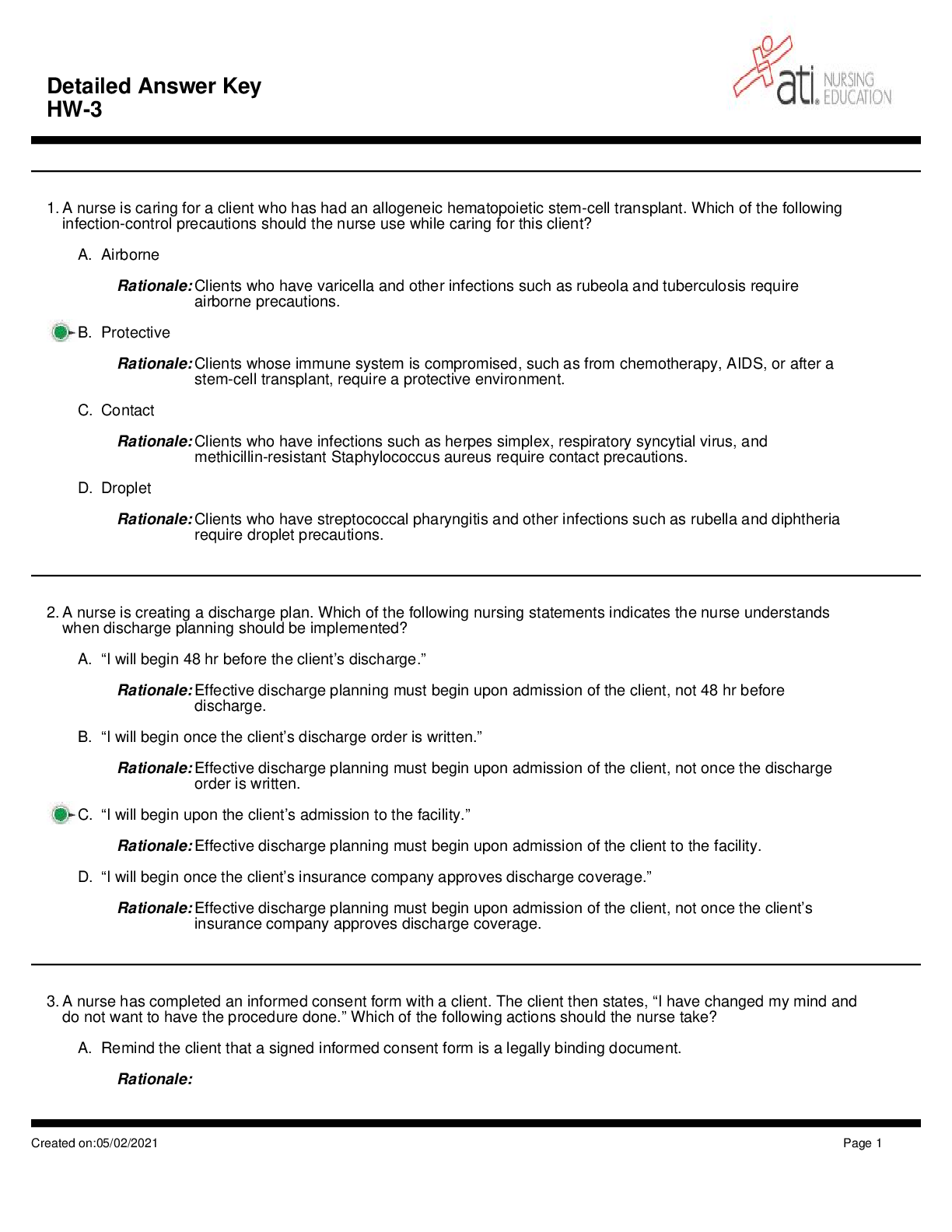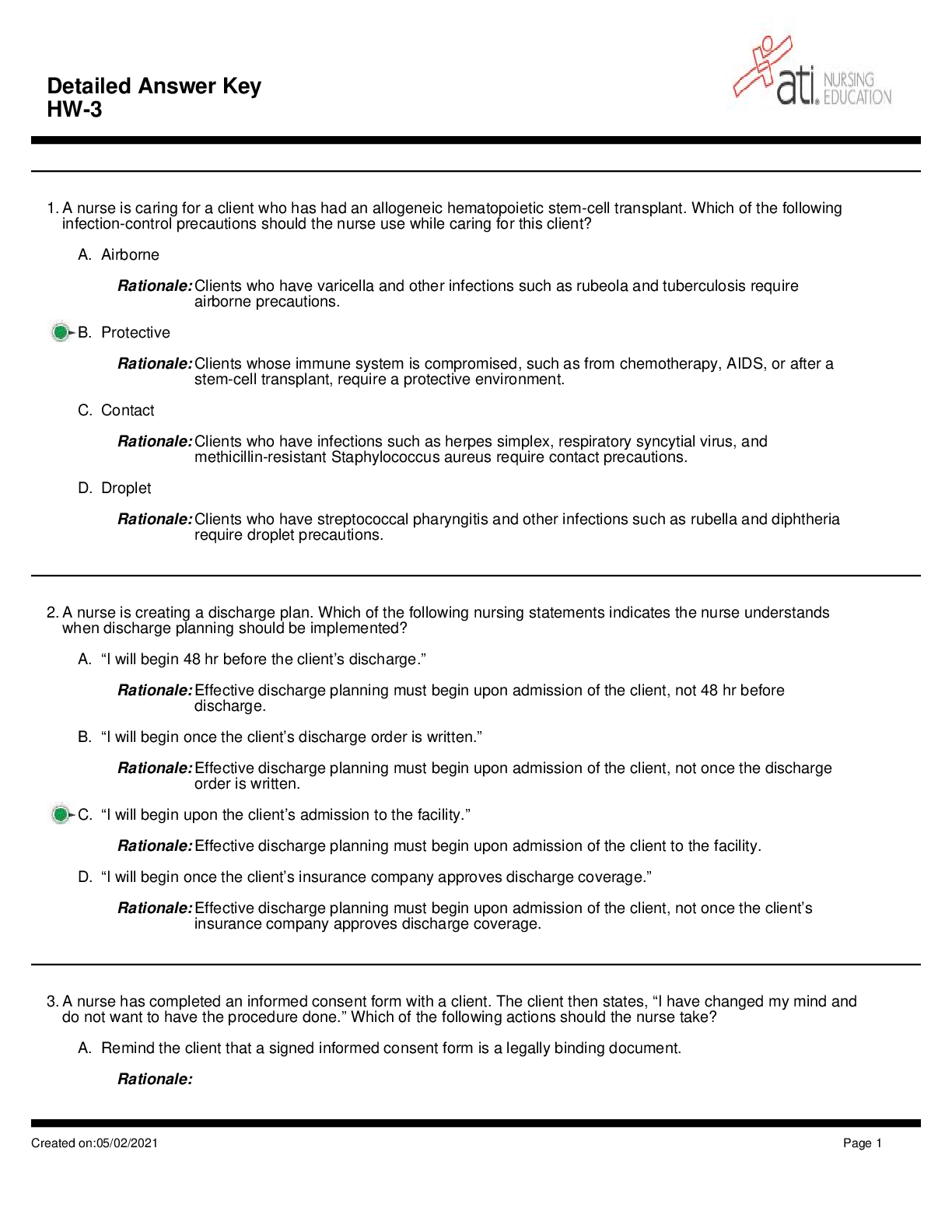Detailed Answer Key Leadership Practice ATI with 25 questions and answers
Course
Project Management
Subject
Chemistry
Category
Questions and Answers
Pages
20
Uploaded By
ATIPROS
Preview 5 out of 20 Pages


Download all 20 pages for $ 6.63
Reviews (0)
$6.63
